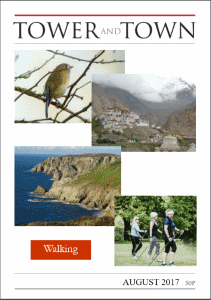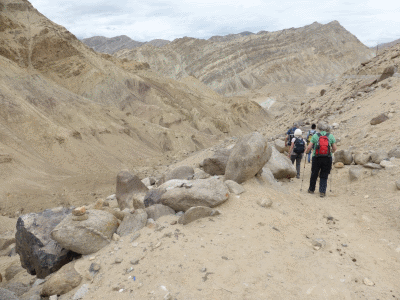

Tower and Town, August 2017 (view the full edition) (view the full edition)Walking In LadakhAn hour north of Delhi the clouds clear to reveal a rugged mountainous land, bisected by the upper reaches of the mighty Indus river, that was once the ancient kingdom of Ladakh. Soon the plane weaves uncomfortably close to barren mountainsides as we descend into Leh; at almost 11,000 feet above sea level, it is one of the world's highest commercial airports. The rarified air makes for a fast and hard landing, After a day to acclimatise in the capital Leh, we set off for our first easy walk along the valley floor. Bright green areas near rivers stand out from the harsh rocky and sandy desert landscape. Farmers make the most of the short growing season but there is little sign of mechanisation. We pass a couple of women tending a few dairy cattle, then a man making the sun-dried mud bricks still widely used for building, his only tools a shovel and wooden mould. A short, stiff climb brings us breathless to the gleaming Thiksey monastery, the goal of today's walk, and we admire the tumult of colour inside and views of the 20,000ft peak Stok Kangri across the valley. 
On subsequent days we walk higher and further, often from one hotel, up to a ridge or pass and on to our next night's stay, while our luggage goes the long way round by road. We see amazing rock formations, beautiful mountain views and revel in the few flowering plants or shrubs that manage to survive this harsh environment. We visit Stok Palace, the home of the Royal Family who were overthrown and exiled by Sikh invaders in the 1830s. Many of the temples and monasteries we visit date from the 15th and 16th centuries when Ladakh was on an important trading route. All too soon it is time to say our farewells, but the pull of the Himalaya is strong - we plan to see more later this year. Bruce Hayllar |